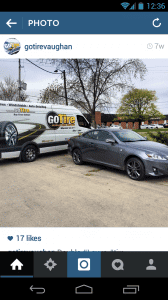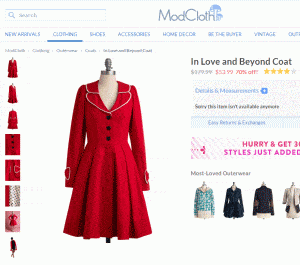How’s your social media marketing working for you? If yours is like most businesses, it’s fallen a little short of expectations, or a lot short.
If your social marketing has been a let down, consider these three points:
- Stop thinking of social as a straight-line sales or lead generation channel. If you’re trying to sell directly on social, you’re missing the point. ‘Social’ means ‘human interaction’ and without that interaction, your social will fail.
- Stop thinking of social as a popularity contest. If you consider your social to be a failure because you have fewer ‘likes’, ‘followers’ or ‘connections’ than you hoped, then you were doomed from the beginning. The point of social media marketing is the same as the point of all marketing, to promote sales and/or generate leads. As you know from your website, traffic (likes, followers and connections on social) is only part of the equation. Conversion is another, just as important part.
- Lots of companies use social to drive lots of sales and/or get lots of leads. You can too. One of the great beauties of the internet is that it is a giant open book. If there is a huge sales success story on the web, you can find it, study it and learn from it. Then you can adapt those lessons to your business, test them and see what works.

If one point above is more crucial than the others, it’s number three. By following it you will automatically accomplish the other two points. You’ll realize that social isn’t a straight-line proposition or a popularity contest. And you’ll find new ways to measure your success, like with better conversion rates.
Three Ways Social Media Can Improve Your Conversions
E-commerce, lead gen, conversion optimization and social media, and how they work together, are all incredibly complex topics. Your social media might not be up to snuff because your social accounts aren’t optimized, or your product images are blurry, or your landing page doesn’t live up to the promise of your tweet.
The examples below show how three companies use social to overcome some of the obstacles that stand between them and converting their customers. But if yours is not a well rounded digital marketing campaign, then what these companies do, or anything your company does, will be less likely to work.
1. Relieving the FUDs (fears, uncertainties and doubts)
GoTire is a mobile tire service franchise operation that received over $200,000 investment capital on TV’s ‘The Dragon’s Den’; Canada’s equivalent of ‘The Shark Tank’.
One GoTire franchisee uses instagram and twitter to post images of the operation in action.
Take a look at GoTire Vaughan’s instagram page and you’ll see a variety of vehicles, receiving a variety of services, in a variety of locations. And most of the shots feature the Go Tire truck in the background for branding.
These are not professional shots, but taken by the franchise owner or an employee.
How can this improve conversion? Go Tire is the first of its kind in its markets and many potential customers have questions about how it all works, what services are offered, etc.. By providing visual answers to these questions, the franchisee quickly removes many of the concerns and uncertainties that might prevent a customer from converting – before the customer even gets to the site.
2. Infusing Social Proof
It’s no secret that Pinterest drives sales. A Shopify study shows Pinterest delivers higher average order values than Facebook, Twitter and even Google. And there are no shortage of ecommerce retailers trying to get in on the action.
But if there is anything more surprising than the Pinterest’s sales potential, it is the number of etailers who use it merely as an extension of their product pages; a click on one of their pins goes straight (straight line?) to their web page.
But not for Mod Cloth, while some of their pins lead to their landing pages, many don’t. Clicking on Mod Cloth’s pins will just as likely lead to a third party site, one that features a Mod Cloth product.



How can this improve conversion?: When customers click on an appealing Mod Cloth pin and land on an independent blog or site, it shows that their choice is popular and they are not alone in their opinion. While we all like to have our own fashion sense, we also like to know that others find our style attractive too. It’s called social proof, and leading your customers to it before they get to your site increases their chances of converting.
3. User-Generated Content
If there is a ubiquitous social media headache, it is finding and/or generating good content. Most ecommerce businesses have an edge on other sectors because they at least have product shots that they can use for content.
But what about the ongoing grind of finding great shots, well-written blog posts, video clips, etc., etc., etc.?
User-generated content (UGC) lets you turn your customers into never-ending sources of great website and social media content like testimonials, blog posts and images.
How can this improve conversion? UGC might be the golden nugget of digital marketing. One simple solution scores lots of marketing goals. UGC inherently provides the often-elusive social proof that can move lots of product and it relieves the pressure to keep finding worthwhile content.
Better yet, if you do what Yogarat does, you can directly link your UGC to your product pages. Imagine a potential customers seeing another customer enjoying your product and being one click away from buying the item.

(Oh no! That’s a straight line!)



